We see so many living things around us. We learn much more about them from television, the internet, etc. It’s very interesting to know that we have so much variety in life on Earth. This variation makes the Earth a unique planet. This variation is called Biodiversity.
What is biodiversity? Simply put, biodiversity is the variety of life on Earth. This includes all plants, animals, and microorganisms, as well as their interactions within ecosystems.
The loss of biodiversity has become a major global issue in recent years, and it’s important to understand why this matters if we want to protect our planet. In this blog post, we will discuss the types of biodiversity, their importance, and ways to restore them.
●⫸ What is Biodiversity?
The term ‘biodiversity’ is a new one, but the concept behind it has been around for ages. Recently we’ve seen how severe threats to nature can be felt by us humans and this caused them to become more important than ever before in our world today where they’re still present even if sometimes hard to see or smell due to their hiding places deep within landscapes which make up most habitats on earth!
How to define it? According to UNEP “Biodiversity is the variety of life on Earth, it includes all organisms, species; and population; the genetic variation among these; and their complex assemblages of communities and ecosystems.”
●⫸ What are the types of Biodiversity?
Biodiversity is observed in three ways –
-
Genetic Diversity
-
Species Diversity
-
Ecosystem Diversity
-
Genetic Diversity–
All the genes of all living species. It is also called Genetic Variability. This can be seen in different fur colors of a cat breed, for example.
-
Species Diversity –
All the different species, differences within a species or between two species. Different biomes and ecosystems experience differences in species. A forest will have more biodiversity than a parking lot because there are many different types of trees, animals, and plants.
-
Ecosystem Diversity –
all the different ecosystems, biomes, habitats, etc, and the difference within a single ecosystem.
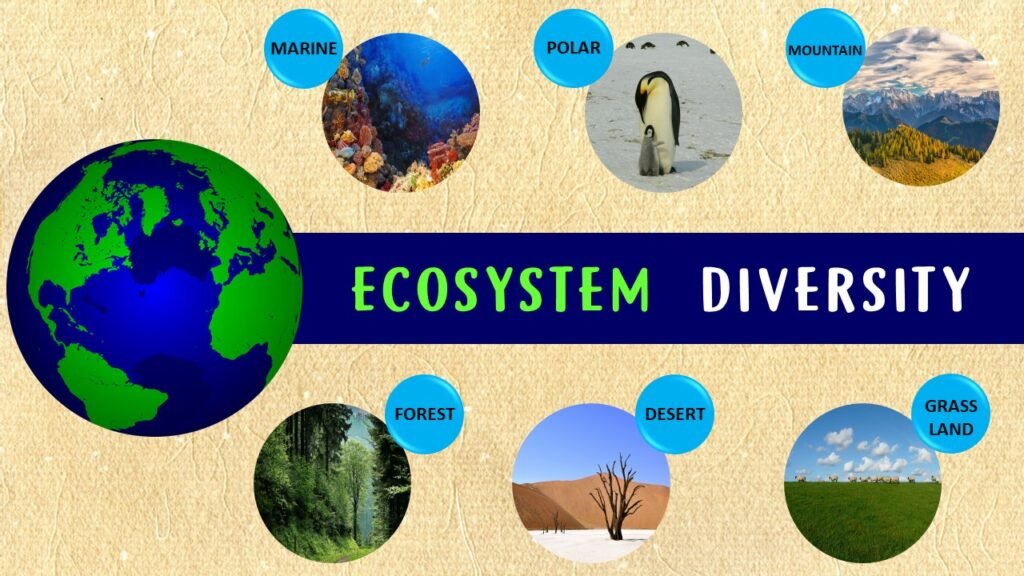
●⫸ Why is biodiversity important?
A healthy level of biodiversity is important for the stability of an ecosystem. When one species disappears, it can cause a ripple effect that impacts other species as well as the environment itself. For example, if bees disappear, it could lead to a decrease in pollination which would then impact the plants that they pollinate.
Biological diversity is a crucial feature of the planet. Because –
- Enriches our aesthetic and moral values: It is an integral part of the customs, traditions, religious practices, the culture of the locals. Each type of biodiversity provides a unique identity to each culture.
- Maintains the variation of life: It supports different lifeforms on the Earth. every species has its right to exist and thrive on the planet. The richness of biodiversity ensures that.
- Food webs sustain due to species diversity: Biodiversity increases the variety of species and ecosystems. It creates interdependence among the different species and populations based on food consumption. Different Trophic Levels of the ecosystems are connected by different food chains forming worldwide food webs.
- Keeps the energy flow in the environment: Biodiversity is the deep-rooted interdependence of biotic components and abiotic components of the environment. Each species is connected with others through food chains and food webs. These food webs are the key components of the energy flow in the environment. Thus, it maintains energy flow in the environment.
- Ecological balance is maintained: It ensures nutrients supply, oxygen supply, pollution-free or less-polluted environment.
- Ecosystems remain working and dynamic: Biodiversity supports the proper functioning of all the natural processes, like – food webs, energy flow in nature, nutrient cycles, Biogeochemical Cycles, etc. All these make the ecosystem dynamic.
- Homeostatic balance is maintained: Nature can cope with the minor changes that occurred. But major changes like environmental pollution, disasters may threaten the homeostatic balance. But basically, biodiversity enables nature to maintain its homeostasis.
- Helps in the prevention of natural calamities and disasters: Each species has its niche to play in nature. Even the diverse ecosystems have their unique role. The plant kingdom plays the main role to reduce carbon emissions. The Earth’s green cover reduces the greenhouse effect and the adversity of global warming.
- Supports the economy of the region: Man was first totally dependent on nature for his survival. Even today’s highly developed MAN is still partially dependent on nature. Around 40% of the world’s economy depends on biodiversity. It is the source of different raw materials, including organic minerals, crops, aquatic species, etc.
- Biodiversity is a source of new medicines and other products that we use in our everyday lives.
- Biodiversity can help us adapt to changing conditions, such as climate change.
- And finally, biodiversity provides us with a sense of wonder and enjoyment.
◆ Ecosystems like Mangroves act as cushions against cyclones, tsunamis, etc. These forests also act as a ‘storehouse of carbon.’ The Equatorial Rainforests are the ‘Lungs of the Earth’ as they supply the majority of oxygen for living organisms. From the dawn of human civilization, different natural elements have been considered an inseparable part of the local religion, culture, and even food and costume.
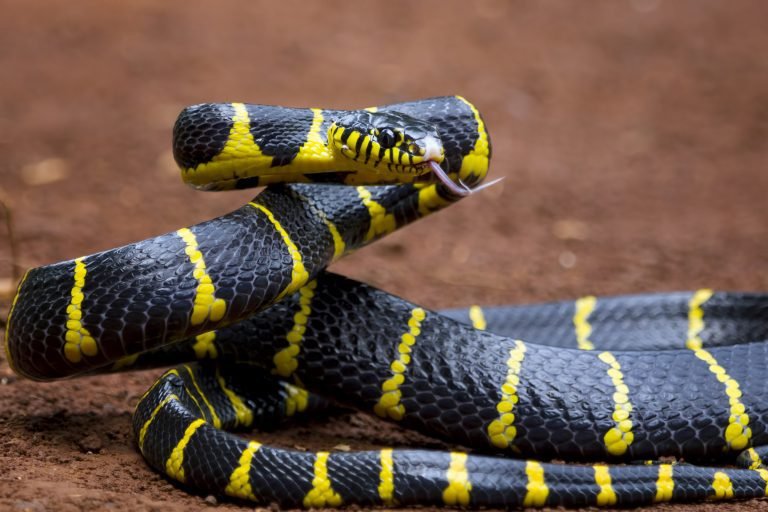
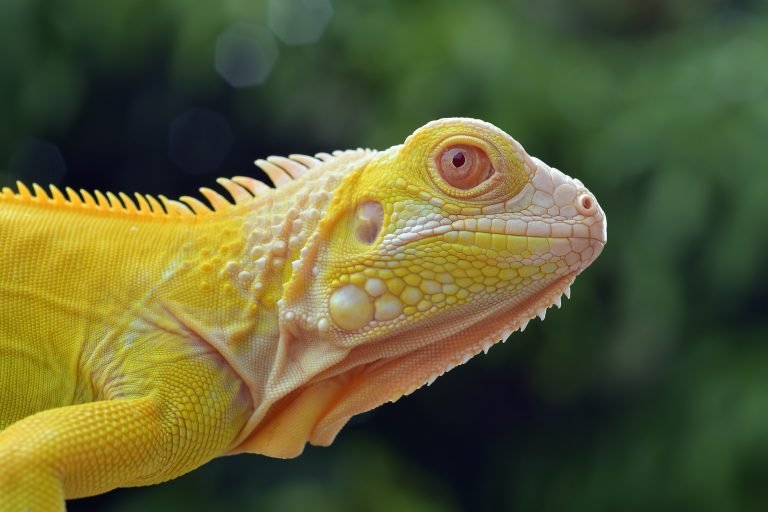
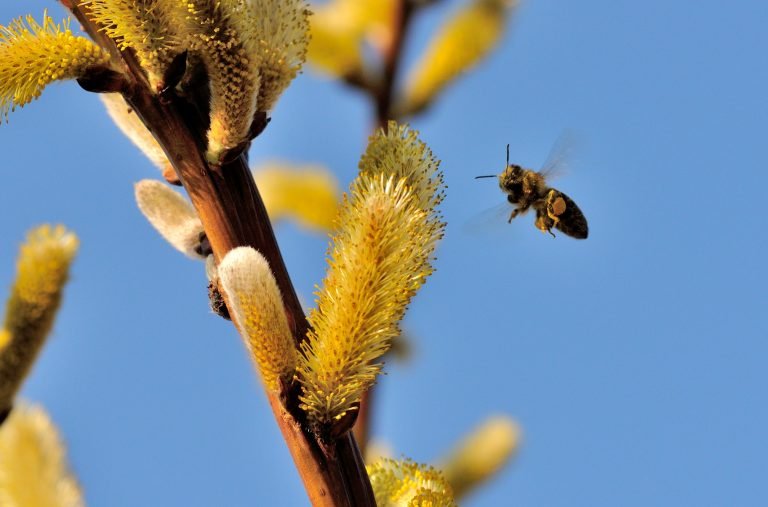
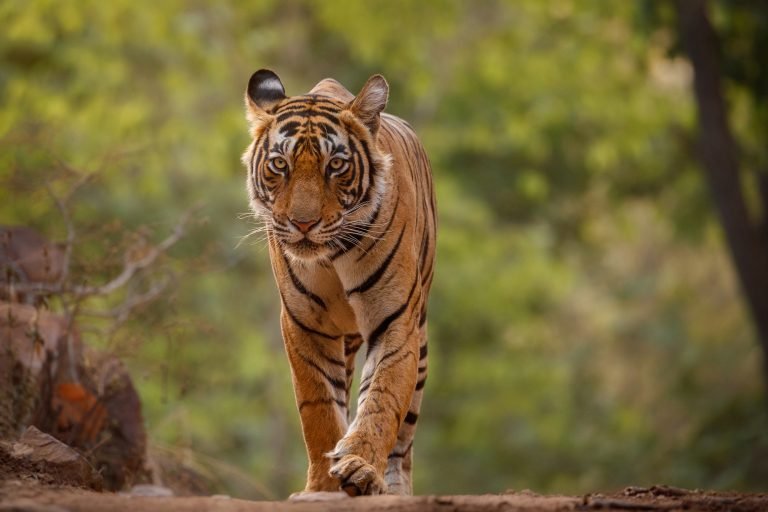

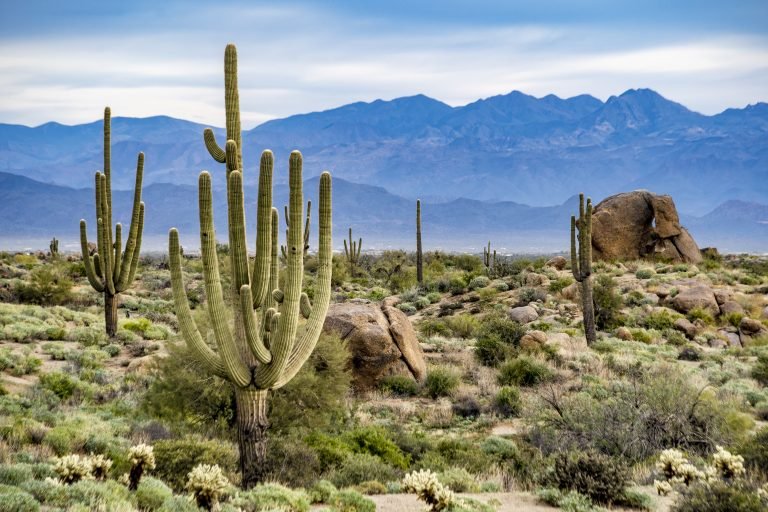
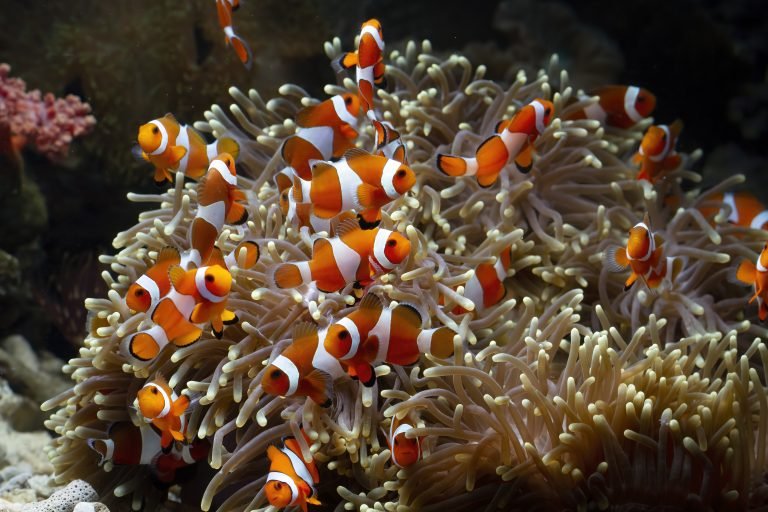

●⫸ What are the threats to biodiversity?
Every day, we are faced with new challenges to biodiversity. Whether it’s a natural disaster or a simple act of development, our environment is constantly changing and species are disappearing at an alarming rate. To protect what’s left of our natural world, it’s important to understand the various threats to biodiversity and how they can be addressed. Here we’ll take a look at some of the most common threats to this vital resource.
- The very foundation of life on Earth, biodiversity, is crumbling at an alarming rate. A primary culprit in this catastrophe is habitat loss, the large-scale destruction of environments where plants and animals reside. This destruction takes many forms:
- Forests, teeming with an incredible abundance of species, are vanishing at an ever-increasing pace. Trees are cut down for timber, to make way for cash crops, or cleared for development. This not only eliminates the homes of countless creatures but also disrupts the delicate balance of the ecosystem.
- As human populations swell, cities sprawl outward, devouring natural habitats. Once pristine ecosystems are paved over for houses, shopping centers, and factories, this fragmentation isolates remaining pockets of wildlife, making it difficult for species to survive.
- To feed a growing global population, agriculture relentlessly expands. Unfortunately, this often comes at the expense of natural ecosystems. Grasslands are plowed under for crops, wetlands are drained, and forests are cleared for grazing land. This not only destroys habitats but also disrupts natural food chains.
- Pollution can also hurt biodiversity. For example, acid rain can kill fish and other aquatic creatures.
- Climate change and global warming are other major threats to biodiversity as they can cause changes in temperature and precipitation that can be detrimental to certain species.
- Invasive species are also a threat to biodiversity as they can out-compete native species for resources, leading to the decline of the native species.
- Different anthropogenic activities like the construction of roads, railway tracks, multipurpose river valley projects, agriculture, etc. destroy or alter the pre-existing biodiversity
- Over-exploitation of species may result in permanent biodiversity loss.
- The occurrence of natural and manmade disasters often causes alteration or loss of habitat, resulting in loss of biodiversity, etc.
●⫸ How can biodiversity be restored?
There is no denying that humanity has had a profound impact on the natural world. In just a few centuries, we have managed to degrade and destroy vast swathes of wilderness, with devastating consequences for biodiversity. As a result, many plant and animal species are now endangered or extinct.
What can be done to restore biodiversity? This is a question that scientists and policymakers are still trying to answer. In this blog post, we will explore some of the potential solutions that have been proposed. We will also discuss the benefits of restoring biodiversity and how everyone can help.
1. Protect Existing Habitats
- Expand Protected Areas: Establish more national parks, nature reserves, and wildlife sanctuaries where development and exploitation are restricted.
- Promote Sustainable Practices: Encourage sustainable forestry, agriculture, and fishing techniques that minimize ecosystem impact.
- Create Wildlife Corridors: Connect fragmented habitats with greenways and corridors, allowing species to move and breed more freely.
2. Active Restoration
- Reforestation and Re-wilding: Plant native trees and vegetation on degraded lands to restore forests and other vital habitats.
- Species Reintroduction: Carefully reintroduce locally extinct species back into their natural habitats.
- Clean Up Pollution: Address water and air contamination and soil pollution to give ecosystems a chance to recover.
3. Combat Invasive Species
- Prevention and Early Intervention: Implement measures to prevent the introduction of new invasive species and quickly act to remove them when they first appear.
- Controlling Established Populations: Manage populations of established invasive species using various methods, including targeted removal, biological control, and habitat modification.
4. Reduce the Impacts of Climate Change
- Shift to Renewable Energy Sources: Reduce reliance on fossil fuels and transition to clean energy solutions.
- Adopt Climate-Smart Practices: Implement agriculture and land use strategies that support healthy ecosystems and reduce greenhouse gas emissions.
5. Promote Education and Awareness
- Public Engagement: Educate communities about the importance of biodiversity and how individual choices can make a difference.
- Citizen Science Projects: Encourage participation in citizen science initiatives to monitor biodiversity and track changes.
6. Policy and Economic Shifts
- Biodiversity-friendly Legislation: Create laws and regulations that prioritize the protection of habitats and species.
- Financial Incentives: Offer incentives for conservation efforts and disincentives for activities harmful to biodiversity.
Biodiversity restoration is an ongoing, collaborative effort. By combining the following strategies, supporting conservation organizations, and making informed choices, individuals and communities can play a part in restoring the planet’s natural wealth.
- Species Risk Assessment to conserve the species accordingly
- Species categorization based on the risk of extinction
- Demarcation and categorization of the natural habitats of the species
- Conserve and protect the natural habitat
- Controlled anthropogenic practices
- We can reduce our environmental impact by conserving energy, recycling, and reducing our consumption of natural resources.
- Practice insitu and exsitu methods for species conservation. We can protect and restore habitat by planting trees, creating nature reserves, and restoring degraded habitats.
- We can control pollution and climate change by reducing factory and automobile emissions and planting trees.
- Prevention of poaching activities
- Well-developed medical facilities ensured that different species
- Promoting Green Economy Initiatives
- Increasing Communication, Education, and Public Awareness (CEPA) programs
Focussing on Multilateral Environmental Agreements related to biodiversity; like – The Convention on the Biological Diversity (CBD), The Convention on International Trade in Endangered Species of Wild Fauna and Flora (CITES), The Ramsar Convention on Wetlands, and The World Heritage Convention.
●⫸ Some examples of successful restoration projects of Biodiversity:
There are many examples of biodiversity restoration projects that have had great success.
- One example is the Oyster Bay Restoration Project in New York, which aimed to restore oysters to their historic habitat in Oyster Bay. The project succeeded in increasing the number of oysters by over 100,000 and improving water quality.
- Another example is the Great Dismal Swamp National Wildlife Refuge in Virginia, which has worked to restore habitats for endangered species such as the red-cockaded woodpecker. The refuge has also created new opportunities for recreation and education about the importance of biodiversity.
-
The Great Green Wall (Africa): This ambitious initiative aims to create an 8,000km belt of restored ecosystems across the width of the Sahel region in Africa. The project tackles desertification, improves land productivity, and creates economic opportunities for local communities. It holds great promise for restoring degraded landscapes and biodiversity across the continent.
- Atlantic Forest Restoration (Brazil): A large-scale effort to restore Brazil’s highly diverse but heavily fragmented Atlantic Forest. This project is expanding and connecting forest fragments through reforestation and natural regeneration, providing crucial wildlife habitats and increasing biodiversity.
-
Rewilding the Danube Delta (Europe): This project involves restoring natural water flows, reintroducing grazing animals, and promoting nature-based tourism. It helps to re-establish self-sustaining ecosystems and boost the populations of birds, fish, and other species.
- Yinchuan Wetland Restoration (China): This project has transformed a degraded wetland in the arid Ningxia region of China. By restoring water flows, replanting native vegetation, and carefully managing the ecosystem, it has created a haven for migratory birds and boosted overall biodiversity.
- Coral Reef Restoration (Global): Various projects worldwide focus on restoring degraded coral reefs and vital marine ecosystems. Techniques include transplanting coral fragments, creating artificial reef structures, and addressing the impacts of pollution and climate change.
These are just a few examples of successful biodiversity restoration projects. With continued effort, we can make even more progress in restoring biodiversity and ensuring that our planet remains healthy and habitable for future generations.
●⫸ Individual's Role in successful restoration of Biodiversity at home:
include:
- Planting a variety of native plants that will support local pollinators.
- Avoid using pesticides or herbicides in your yard.
- Create a habitat for wildlife by leaving dead trees or adding nesting boxes.
- Compost your food scraps instead of sending them to the landfill.
- Support local farmers who are using sustainable practices.
You can also help by reducing your overall impact on the environment. Consider ways you can reduce your consumption of water and energy, recycle more, and drive less. Every little bit helps when it comes to biodiversity!
●⫸ Conclusion:
Biodiversity is essential for the health of our planet. By understanding the types, importance, and ways to restore biodiversity, we can help to protect our planet and its many inhabitants. Conservation of Biodiversity not only means conservation of species variety but also supports the uniqueness of the Earth as ‘the only planet with Life’ in the solar system.
So, what are your thoughts on biodiversity? Let us know in the comments below! And be sure to check out our other blog posts for more information on environmental topics! If you enjoyed this post, please share it with your friends! Thank you for reading! 🙂
Did you find this post informative? Pin it for later reference! See you soon! 🙂
▶ Frequently Asked Questions on Biodiversity:
Biodiversity refers to the variety and abundance of life on Earth. This includes all plants, animals, and microorganisms, as well as the habitats in which they live.
Biodiversity can refer to the different species of plants and animals that live in an area, as well as the variety of ecosystems found on Earth.
Biodiversity is important because it helps maintain healthy ecosystems, provides us with clean air and water, food, and medicine, and is essential for the survival of all life on Earth.
There are an estimated eight million species of animals on Earth!
Habitat loss is the biggest threat to biodiversity. This can happen when natural habitats are destroyed or degraded by human activities, such as deforestation, urbanization, and agriculture.
There are several ways that we can help restore biodiversity, such as conserving energy and resources, protecting and restoring habitats, and raising awareness about the importance of biodiversity.
You can help protect biodiversity by doing things like recycling, reducing your consumption of natural resources, and planting trees. You can also raise awareness about the issue by talking to your friends and family about it!
There are an estimated five hundred thousand to one million plant species on Earth.





